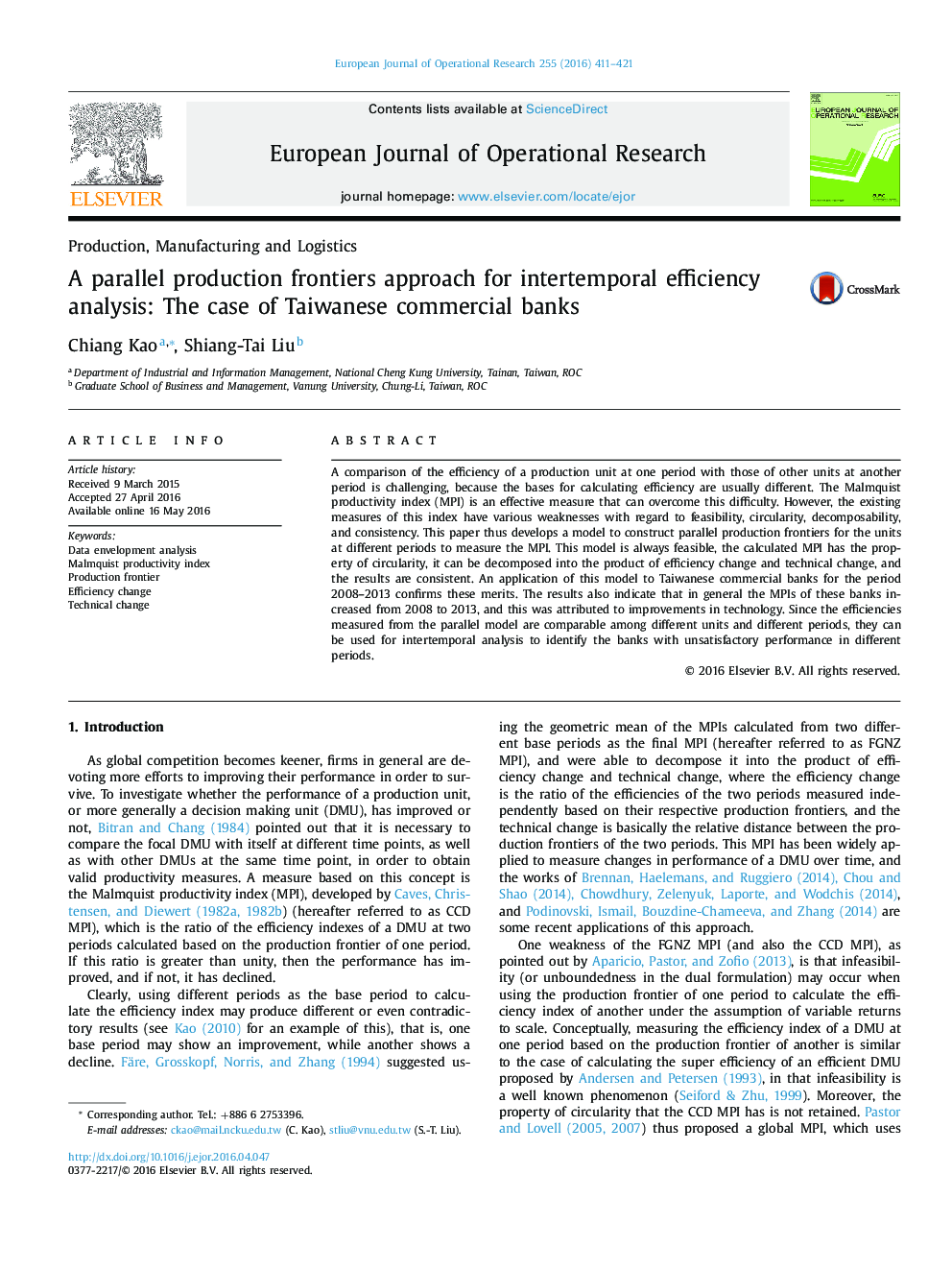| Article ID | Journal | Published Year | Pages | File Type |
|---|---|---|---|---|
| 479197 | European Journal of Operational Research | 2016 | 11 Pages |
•We construct parallel production frontiers to measure the Malmquist productivity index.•The calculated MPI has the property of circularity, and the results are consistent.•The MPI can be decomposed into the product of the efficiency and technical changes.•The efficiency and technical changes also have the property of circularity.•The performance of Taiwanese commercial banks improved in 2008–2013.
A comparison of the efficiency of a production unit at one period with those of other units at another period is challenging, because the bases for calculating efficiency are usually different. The Malmquist productivity index (MPI) is an effective measure that can overcome this difficulty. However, the existing measures of this index have various weaknesses with regard to feasibility, circularity, decomposability, and consistency. This paper thus develops a model to construct parallel production frontiers for the units at different periods to measure the MPI. This model is always feasible, the calculated MPI has the property of circularity, it can be decomposed into the product of efficiency change and technical change, and the results are consistent. An application of this model to Taiwanese commercial banks for the period 2008–2013 confirms these merits. The results also indicate that in general the MPIs of these banks increased from 2008 to 2013, and this was attributed to improvements in technology. Since the efficiencies measured from the parallel model are comparable among different units and different periods, they can be used for intertemporal analysis to identify the banks with unsatisfactory performance in different periods.
